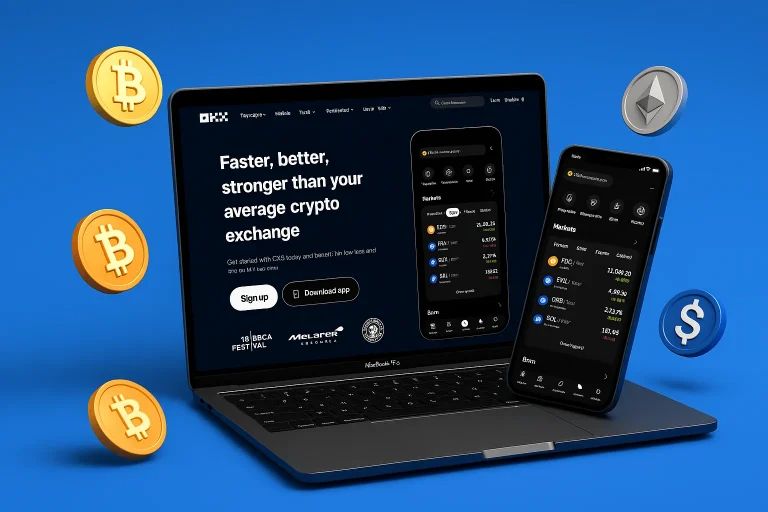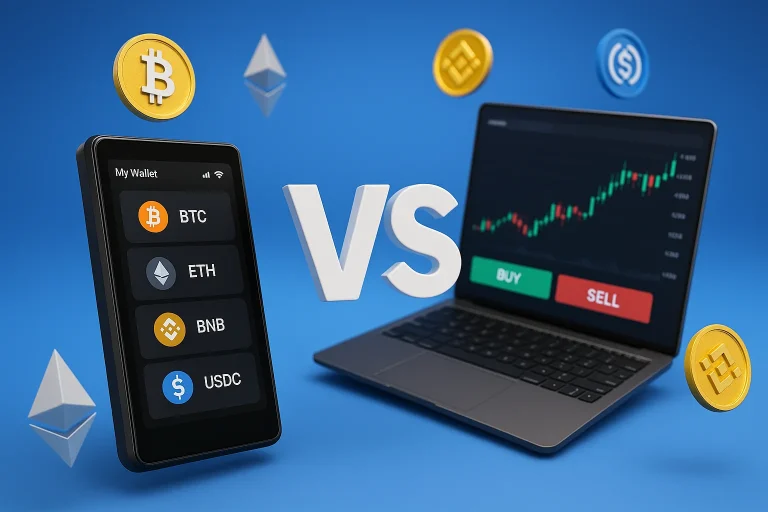Ethereum’s growth has pushed its base layer to the limit. With high fees, slow block times, and increasing demand from users and developers, scaling solutions are no longer optional but necessary. That’s where Arbitrum and Polygon come in.
Both Layer-2 networks aim to ease pressure on the main Ethereum chain, but their approaches couldn’t be more different. The Arbitrum network leans on Optimistic Rollups and tight integration with Ethereum. The Arbitrum ecosystem has gained traction for its low fees and developer-friendly environment. Meanwhile, Polygon is building a multi-chain framework with ZK tech, powered by its native POL token.
For users comparing Layer-2s, it often comes down to performance. Think transactions per second (TPS), max TPS, block time, and how those translate into real-world usage. But speed isn’t the only factor. Ecosystem maturity, tooling, and long-term strategy matter too.
This guide compares the Arbitrum solution and Polygon across all the key angles, helping you decide which one best meets your needs in today’s market.
Table of contents
Arbitrum vs Polygon: A Brief Overview |
|
|---|---|
| Arbitrum | Type: Layer-2 Optimistic Rollup Launch Year: 2021 (Offchain Labs, founded in 2018) Consensus Mechanism: Inherits Ethereum’s PoS (no separate validator set) TPS (Live): ~24.78 TPS TPS (Max over 100 blocks): ~1,105 TPS TPS (Theoretical Max): Up to 40,000 TPS Block Time: ~0.25 seconds Finality Time: ~16 minutes (due to fraud-proof window) Smart Contract Support: Solidity, Rust, C, C++ (via Arbitrum Stylus) Virtual Machine: Arbitrum Virtual Machine (AVM) Main Focus Areas: DeFi, developer tooling, high-security apps EVM Compatibility: Full EVM support Security Model: Secured by Ethereum (rollup settling to L1) Developer Ecosystem: Power-user focus, Rust/C++ support, Orbit Layer-3 chains Best Use Cases: Advanced DeFi, governance, complex dApps, custom Layer-3 chains |
| Polygon | Type: Multi-chain ecosystem (PoS sidechain, zkEVM, etc.) Launch Year: 2020 (originally Matic, founded in 2017) Consensus Mechanism: PoS sidechain with its own validators + zk-rollup variants TPS (Live): ~46.82 TPS TPS (Max over 100 blocks): ~429.1 TPS TPS (Theoretical Max): ~714.3 TPS Block Time: ~2.13 seconds Finality Time: ~4 minutes 16 seconds Smart Contract Support: Solidity, Vyper Virtual Machine: Polygon Virtual Machine (PVM) Main Focus Areas: NFTs, payments, mainstream adoption, brand loyalty programs EVM Compatibility: Full EVM support Security Model: PoS sidechain (less secure) + zkEVM (highly secure via ZK proofs) Developer Ecosystem: Broad Web3 + enterprise focus, zk scaling for mass-market scalability Best Use Cases: NFTs, games, brand rewards, payments, enterprise blockchain solutions |
The Genesis of Arbitrum and Polygon
In 2017, a group of developers (Jaynti Kanani, Sandeep Nailwal, Anurag Arjun, and Mihailo Bjelic) noticed a growing problem with the Ethereum blockchain. Network congestion and high gas fees were choking the user experience.
So, they launched what was then called Matic Network with a clear goal: to provide Ethereum scaling solutions that could speed up transactions while keeping costs low.
Over time, Matic evolved into Polygon, embracing a multi-pronged approach that included sidechains, ZK-rollups, and a PoS consensus mechanism to enhance transaction speed and network security. Polygon’s vision expanded beyond just a single solution: it became a whole ecosystem to enable developers to build scalable apps while remaining fully compatible with the Ethereum Virtual Machine (EVM).
Meanwhile, in 2018, a team of Princeton researchers led by Ed Felten took a different path to solve Ethereum’s scaling bottleneck. They founded Offchain Labs and created Arbitrum, a layer-2 scaling solution that uses optimistic rollups to bundle multiple Ethereum transactions off-chain.
Arbitrum can deliver faster throughput and drastically lower gas fees without sacrificing Ethereum’s network security by validating these transactions through a fraud-proof mechanism.
Unlike Polygon, Arbitrum runs its own Optimistic Virtual Machine (named Arbitrum Virtual Machine), designed to stay as close as possible to Ethereum’s tooling. This allows developers to deploy Ethereum smart contracts seamlessly using familiar languages like Solidity. Plus, with tools like Arbitrum Stylus, developers gain even more flexibility with languages such as Rust and C++, broadening their appeal.
Both projects emerged to tackle the same core challenge: scaling Ethereum efficiently. Polygon took a multi-solution, multi-chain ecosystem approach focused on lower transaction costs and flexibility. Arbitrum focused squarely on a layer-2 scaling solution that bundles transactions for better processing speed and validity on the Ethereum mainnet.
Together, they represent two of the most promising routes for overcoming Ethereum’s scaling limitations while enabling developers to build faster, cheaper, and more secure dApps.
But their approaches were different; below, you’ll understand better why we say that.
Arbitrum vs Polygon: Technical Comparison
Winner: Arbitrum (ARB)
Blockchain and Consensus Mechanisms
Arbitrum and Polygon extend the Ethereum platform’s capabilities but do so through different blockchain structures and consensus layers.
Arbitrum is designed as an Optimistic Rollup, which means it handles most computation and storage off-chain and then submits the results back to Ethereum. It doesn’t use its validator set or consensus protocol. Instead, it relies entirely on Ethereum’s Proof of Stake consensus to finalize and secure its transactions. In short, Arbitrum trusts Ethereum’s validators to do the heavy lifting regarding securing the network.
Arbitrum’s multi-round fraud-proof system makes it unique, which allows for a more detailed and efficient way to resolve disputes when someone challenges a transaction’s validity. The architecture is focused on high Ethereum compatibility, making it easier for developers to build and deploy applications using standard Ethereum tools.
Polygon, by contrast, uses a dual approach. The original Polygon PoS chain operates as a sidechain with its own Proof of Stake validator network, separate from Ethereum. Validators stake POL (prev. MATIC) tokens to help process and validate transactions. While this model offers high throughput and low fees, its security is more independent and less tightly bound to Ethereum.
On the other hand, Polygon zkEVM, another product within the Polygon ecosystem, uses zero-knowledge rollups, offering stronger security by generating cryptographic proofs verified directly on Ethereum. This allows developers to choose between speed and security depending on the use case.
So, while both chains are built to scale Ethereum, their architecture and consensus models reflect different priorities. Arbitrum prioritizes full Ethereum alignment and inherited security, while Polygon offers more flexibility across different products. It trades off some security for speed in its PoS chain but goes deep on security in its zkEVM solution.
Scalability and Network Throughput
Regarding real-time transaction speed, Polygon leads with about 46.82 transactions per second (TPS), nearly double that of Arbitrum’s 24.78 TPS. This means Polygon processes more Ethereum transactions live, making it a solid choice for applications needing steady throughput.
However, Arbitrum outperforms Polygon in terms of maximum transaction capacity. Its max TPS over 100 blocks hits 1,105 tx/s, higher than Polygon’s 429.1 tx/s. Even more striking is Arbitrum’s max theoretical TPS at 40,000 tx/s, compared to Polygon’s 714.3 tx/s, which shows that Arbitrum can potentially handle far heavier loads.
Arbitrum also boasts a faster block time of just 0.25 seconds, significantly lower than Polygon’s 2.13 seconds, suggesting quicker transaction initial processing on Arbitrum. Yet Polygon achieves finality (when transactions are fully confirmed and irreversible) faster, at around 4 minutes 16 seconds, while Arbitrum takes about 16 minutes. This longer finality time is due to Arbitrum’s fraud-proof verification model, which adds security checks.
In terms of transaction volume, Polygon processed almost double the transactions as Arbitrum over the same period, reflecting its popularity and active multi-chain ecosystem.
So, Polygon excels at sustained real-time transaction processing with quicker finality. Arbitrum offers higher maximum capacity and faster block times but with slower finality due to its security model.
All data referenced here comes from Chainspect.
Network Security
Arbitrum uses rollup technology to boost Ethereum’s transaction capacity and cut gas fees. It handles most computation off-chain but settles proofs on Ethereum’s main chain, keeping security tight while scaling efficiently.
Polygon takes a different route with a network of sidechains secured by a decentralized set of validators. This setup enhances transaction throughput and gas costs while offering strong security and decentralization, which are key for DeFi platforms relying on trustless operations.
Programming Languages and Smart Contract Compatibility
Arbitrum is fully EVM-compatible, allowing developers to deploy Solidity-based smart contracts without rewriting code. It runs on the Arbitrum Virtual Machine (AVM), designed to match Ethereum’s tooling and workflows closely. Whether you use Hardhat, Remix, or Foundry, deployment is straightforward.
Beyond Solidity, Arbitrum supports advanced tooling like Arbitrum Stylus, which enables contracts written in Rust, C, and C++, offering more flexibility beyond standard EVM languages.
Polygon supports Solidity and Vyper smart contracts through its Polygon Virtual Machine (PVM), which is also fully EVM-compatible. With its PoS consensus mechanism and ZK-rollups, Polygon delivers faster and cheaper transactions, making porting existing Ethereum DApps within its multi-chain ecosystem easy.
In this regard, both platforms prioritize Ethereum smart contract compatibility. Still, Arbitrum offers expanded language support beyond Solidity, while Polygon focuses on diverse scaling solutions and consensus models for broader use cases.
Arbitrum vs Polygon: Market Performance
Winner: Arbitrum (ARB)
Market Capitalization
As of July 1, 2025, Polygon (POL) holds a slight lead in market capitalization, sitting at around $1.90 billion, compared to Arbitrum’s $1.77 billion, according to data from MarketCapOf, CoinMarketCap, and CoinCodex. While both tokens are close in valuation, the difference reflects subtle market perceptions.
Polygon’s edge in market cap is rooted in its longer presence in the Ethereum ecosystem, its widely adopted PoS chain, and its investments in multiple scaling approaches like zkEVM and AggLayer. These make Polygon appealing to developers and enterprise players looking for long-term infrastructure, particularly in multi-chain deployments.
Arbitrum, despite launching its token more recently, has seen massive adoption in DeFi and is often considered the most used rollup in terms of TVL and developer activity. Its slightly lower cap could signal undervalued potential, especially given how fast its ecosystem is expanding. However, ongoing token unlocks and larger circulating supply growth have added sell pressure, slightly capping its upward movement in the short term.
Supply & Price Action
As of July 1, 2025, Arbitrum (ARB) trades at $0.325 with a circulating supply of about 4.96 billion tokens, while Polygon (POL) trades at $0.181 with a circulating supply of 10.45 billion tokens, based on figures from MarketCapOf, CoinGecko, and CoinCodex.
Polygon’s price reflects its broader distribution and gradual transition from MATIC to POL, which introduced some temporary uncertainty but has largely stabilized. The larger supply and lower price also make POL more accessible to retail investors, especially those betting on long-term adoption across enterprises and public-private partnerships.
Arbitrum’s price history has been more volatile, heavily influenced by scheduled token unlocks and waves of speculative trading. Still, its price has shown resilience due to strong developer engagement, robust infrastructure tooling (like Stylus), and expanding DeFi usage.
With more than half of its total supply still locked, ARB has potential price catalysts ahead of time, but it also carries greater risk in short-term valuation dips.
Trading Volume & Market Sentiment
According to CoinMarketCap and CryptoNews, as of July 1, 2025, Arbitrum (ARB) significantly outpaces Polygon in daily trading volume, averaging between $787 million compared to Polygon’s $108 million. This signals higher liquidity and stronger real-time demand for ARB across exchanges.
However, the market sentiment tells a more nuanced story. According to Changelly, the current sentiment for Arbitrum is bearish (74% of technical indicators flash red) despite the overall Fear & Greed Index sitting at 68 (Greed). This reflects a contradiction: although the broader crypto market feels confident, Arbitrum’s chart signals don’t align with that optimism.
Polygon shows a similar situation. CoinCodex also marks Polygon’s sentiment as bearish, even though the Fear & Greed Index reads 66 (Greed). Polygon also recorded 15 out of the last 30 days in green, with 8.32% price volatility, suggesting a more balanced, albeit cautious, investor outlook.
Practical Uses of Arbitrum vs. Polygon
Winner: Polygon (POL)
At a glance, Arbitrum and Polygon serve the same mission: to make the Ethereum blockchain faster, cheaper, and more scalable. Both chains:
- They are fully EVM-compatible, allowing developers to deploy Solidity-based smart contracts without modification.
- Support Ethereum-native tools like Remix, Hardhat, Foundry, and MetaMask.
- Enable DeFi protocols, NFTs, Web3 games, and token infrastructure.
- Connect with major Oracle networks and bridges for interoperability.
- Offer significantly lower fees and faster transaction speeds than the Ethereum mainnet.
However, under the hood, their architecture, use cases, and target audiences split in very different directions.
What Arbitrum Does Best
Arbitrum focuses on high-performance, deeply composable DeFi (used by complex DeFi protocols like GMX, Gains Network, and Silo Finance) with a technical edge that appeals to power users and developers who need precision.
It is ideal for:
- Advanced DeFi apps;
- Derivatives and leverage trading;
- On-chain governance and infrastructure-heavy platforms;
- Developers building with alternative programming languages.
What Polygon Does Best
Polygon focuses on mass-market scalability (already widely used by major brands, such as Starbucks, Adidas, and Stripe) for NFTs, loyalty programs, and payments, making it easier for users and enterprises to adopt blockchain tech without deep crypto knowledge.
It is ideal for:
- NFT marketplaces and drops;
- Brand loyalty and rewards platforms;
- Crypto payments and fintech integrations;
- Casual games and mobile dApps.
The Short and Long-Term Perspectives of ARB vs. POL
Winner: Arbitrum (ARB)
According to CoinCodex, POL appears more stable in the short term. It’s currently trading around $0.1815 and is projected to increase to approximately $0.191 within 30 days. Forecasts suggest it could close out 2025 between $0.185 and $0.207, reflecting a modest but steady growth pattern. POL is shaping up as the more conservative choice for short-term holders looking for lower volatility and more predictable movement.
ARB, on the other hand, is expected to experience more price fluctuations. From its current level near $0.325, projections show a dip to around $0.257 this month, followed by some recovery, with a brief upswing to $0.343 before settling closer to $0.270 by year’s end. It’s a less stable ride that could be setting up for a longer-term payoff.
According to CoinCodex, the long-term narrative shifts in ARB’s favor. By 2026, it’s projected to climb to an average of $0.544, rising to around $0.62 in 2027. A brief dip in 2028 could pull it down to $0.49, but the outlook from 2029 onward looks bullish. Estimates suggest ARB could reach highs of $1.44 in 2029 and hover near $1.40 in 2030, a potential 4x from today’s value.
In comparison, POL maintains a slower but more consistent growth trend. It’s forecasted to average $0.240 in 2026, increase slightly to $0.249 in 2027, see a slight pullback in 2028, and reach around $0.2968 by 2030. That puts its long-term growth potential at roughly 63% from current prices.
Disclaimer. This analysis is for informational purposes only and does not constitute financial advice. Cryptocurrency investments carry significant risks due to high volatility. Always perform thorough research or consult a financial advisor before investing.
Polygon vs. Arbitrum: Where Are They Heading?
Arbitrum is doubling down on developer freedom and raw performance. The Stylus upgrade lets developers build smart contracts in Solidity and Rust, C, and C++, thanks to their virtual machine (AVM). This opens doors to faster, cheaper transactions, making it easier to build complex apps that can outperform Ethereum’s main chain in speed and cost. Arbitrum’s Data Availability Committee keeps data secure and available without compromising decentralization.
In addition, Arbitrum Orbit lets anyone spin up permissionless Layer-3 chains, giving devs custom scalability options for niche use cases like gaming or privacy apps. They’re also tackling potential fraud challenges head-on with advanced protocols like BoLD and steadily decentralizing their sequencer to reduce censorship risks.
Meanwhile, Polygon is all about building a mega-bridge across chains. Their Polygon Bridge continues to be a backbone for moving assets seamlessly between Ethereum and various Layer-2s, making interoperability a top priority. Their new AggLayer upgrades aim to link multiple blockchains into one scalable, interoperable network, targeting massive throughput improvements and real-world uses like stablecoin payments.
Polygon relies heavily on its Proof-of-Stake chain, optimizing consensus and throughput for real-world asset tokenization, especially in institutional finance. Unlike Arbitrum, which focuses on custom virtual machines and developer flexibility, Polygon bets on a unified ecosystem with smooth asset flows.
So, regarding key differences in their future perspectives, Arbitrum focuses on expanding the developer toolkit and layered scalability with its own virtual machine and data availability innovations. Polygon centers on cross-chain interoperability and leveraging its popular bridge to keep assets flowing, all while building infrastructure for a global blockchain economy.
FAQ
What is Arbitrum?
Arbitrum is a layer-2 scaling solution for the Ethereum network. It uses optimistic rollups to process transactions off the Ethereum mainnet, reducing gas fees and network congestion. It supports Ethereum smart contracts, is fully EVM-compatible, and runs on the Arbitrum Virtual Machine (AVM). Bundling multiple transactions offers faster transactions, lower transaction fees, and a higher transaction processing capacity while preserving Ethereum’s security.
What is Polygon?
Polygon is a multi-chain ecosystem and a layer-2 solution that enhances the Ethereum blockchain using scaling solutions like sidechains, zk-rollups, and the Polygon PoS chain. It uses the Polygon Virtual Machine, supports Ethereum smart contracts, and helps scale Ethereum by offering lower fees, faster transactions, and compatibility with existing Ethereum dApps. The Polygon network processes on-chain transactions more efficiently, using its native token (previously MATIC, now POL).
Which is better, Polygon or Arbitrum?
It depends on your use case. Arbitrum leads in EVM compatibility and has been strongly adopted in the optimistic rollup space. Its fraud-proof system ensures transaction validity with enhanced security. Polygon shines with more diverse scaling solutions, including ZK rollups and a large Polygon ecosystem. It’s known for lower gas fees and broad developer adoption. For Ethereum scaling solutions, both outperform the Ethereum main chain regarding transaction speed and fees, but differ in technology and ecosystem focus.
Is Polygon faster than Arbitrum?
In most cases, yes. The Polygon PoS chain is known for faster transactions due to its off-chain processing model and PoS consensus mechanism. Arbitrum, while fast, relies on optimistic rollups, which require a fraud-proof verification model that can delay finality. However, transaction speed can vary depending on network congestion and transaction data complexity.
What distinguishes Polygon from Arbitrum?
Arbitrum uses optimistic rollups, while Polygon supports multiple scaling solutions, such as ZK rollups, sidechains, and a PoS consensus algorithm.
Arbitrum relies on fraud proofs to validate transactions. Polygon is shifting to zero-knowledge-based solutions for faster finality and lower transaction costs.
Polygon supports a broader multi-chain ecosystem, while Arbitrum focuses on layer-2 scaling for the Ethereum network.
Where can I buy ARB and POL (previously MATIC)?
You can buy ARB (Arbitrum’s native token) and POL (Polygon’s new, formerly MATIC) on major crypto exchanges like Binance, Coinbase, Kraken, and Uniswap. Both tokens have high market cap rankings and are available across multiple Ethereum layers.
Final Thoughts
So, where do things land in the Arbitrum vs Polygon debate? Both networks offer meaningful answers to Ethereum’s challenges (from high gas fees to limited throughput), but solve them differently.
Arbitrum sticks closer to Ethereum’s core, offering a secure, rollup-based Layer-2 experience with strong performance for complex DeFi and infrastructure-heavy apps. Polygon, however, provides various scaling solutions, including a PoS sidechain and a zkEVM, giving developers flexibility across security, speed, and user experience.
If your priorities are DeFi performance, native Ethereum compatibility, and future-proof tooling, Arbitrum has the edge. It offers better peak throughput, multi-language support through Stylus, and developer-first features like Orbit chains.
If you’re focused on mass adoption, payments, NFTs, and enterprise use cases, Polygon wins with its broader reach, faster finality, and partnerships with major global brands. Its multi-chain framework also gives projects options that Arbitrum doesn’t currently match.
Each network plays a critical role in scaling Ethereum. The better one depends on what you’re building and for whom you’re building it.




